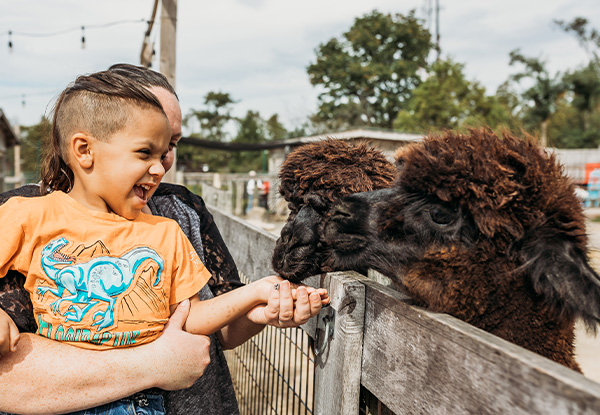Alpaca
Native to the Andes Mountains of South America, alpacas are now valued worldwide for their unique fiber.
Day of Creation: six
Biblical Kind: camel (includes Bactrian camels, dromedary camels, llamas, guanacos, alpacas, and vicuñas)
Status: domesticated
Height: 2.5–3 feet (0.7–0.8 meters) at the shoulder
Weight: 100–200 pounds (45–91 kilograms)
Habitat: Andes Mountains of South America, but domesticated worldwide
Lifespan: 20 years
Diet: grasses, leaves, bark
Family Life: live in herds
Reproduction: single crias are born after 10- or 11-month gestations
Fun Facts
Species within the camelid kind can interbreed and create hybrids. Dromedary and Bactrian camels can interbreed to create hybrids called tülus (TOO-loos), although different names exist depending on the region and language. A cross between a camel and a llama is called a cama. A cross between a male llama and a female alpaca is called a huarizo (wahr-EE-tzo), while a cross between a male alpaca and a female llama is called a misti. Llamas and guanacos (wan-AH-cohs) interbreed to create llamanacos, while alpacas and vicuñas (vih-COON-yas) interbreed to create paco-vicuñas.
Camelids can all survive on very little food and water and can eat a wide variety of plant material. They have oval-shaped red blood cells, which allow them to store more water than other mammals. They have two-toed feet with toenails and leathery footpads that help them climb precarious mountain slopes or walk on shifting sands.
Alpacas are often confused for llamas, but they are much smaller and have much shorter faces and ears. Alpacas also tend to be more herd-minded and will choose to run away from threats instead of fighting against them. In contrast, llamas are much more independent and braver than alpacas and will readily fight off predators. While alpacas are primarily used for their fiber, llamas are primarily used as pack animals or guard animals.
Alpacas come in 22 basic colors with many more variations and blends. Their fiber is preferred over sheep wool because it lacks lanolin, does not retain water, and has a much softer texture. It is the second strongest animal fiber (after mohair).
There are two types of alpacas: Huacaya (wah-KY-ah) and Suri (SOO-ree). Huacayas account for 90% of alpacas and have fluffy, crimpy fleece, whereas Suris have silky, draping fleece that resembles pencil locks.
